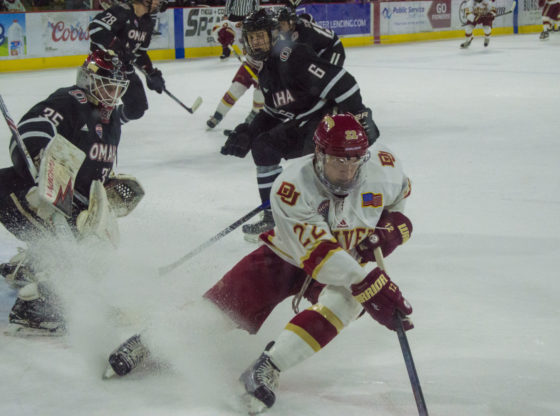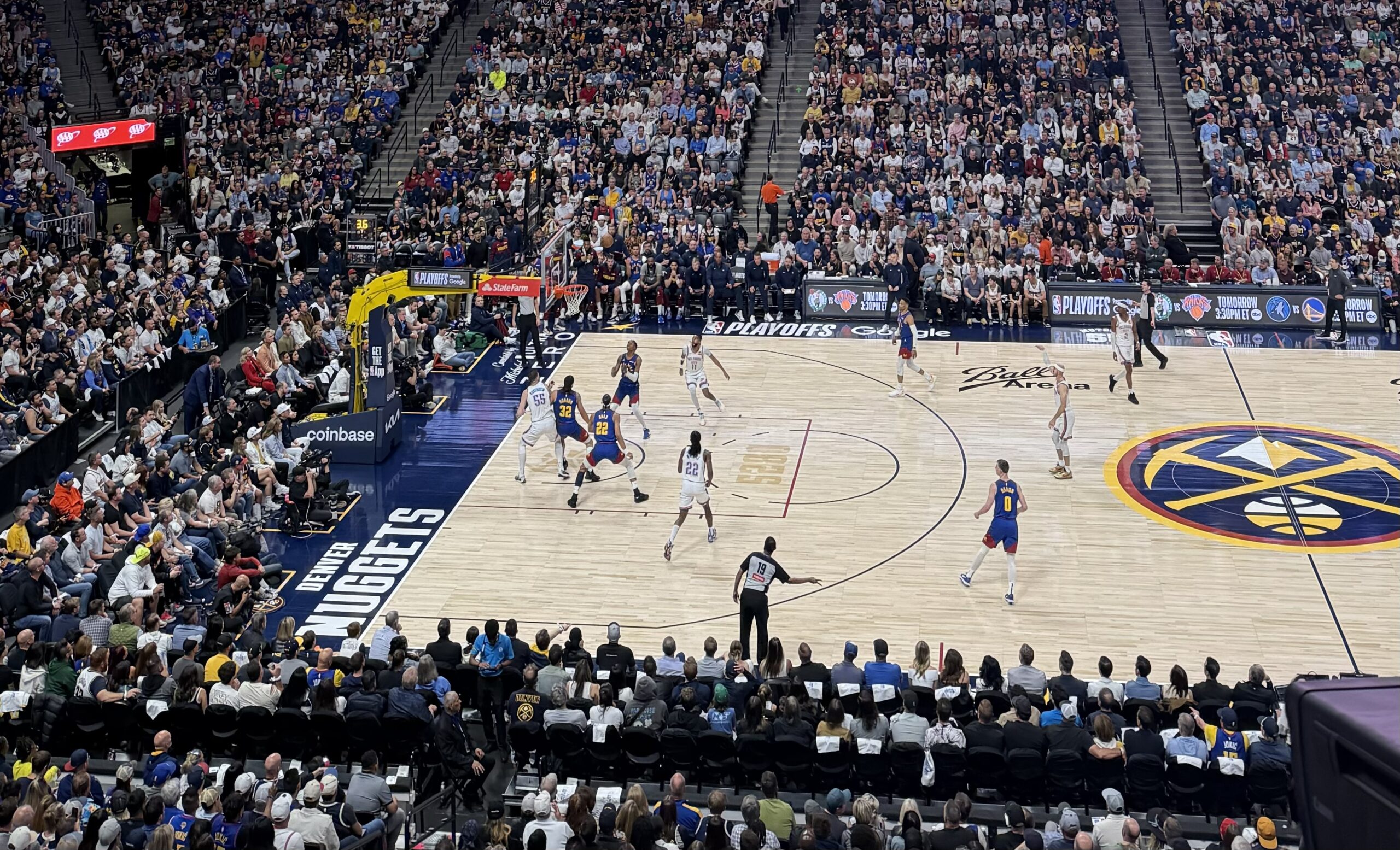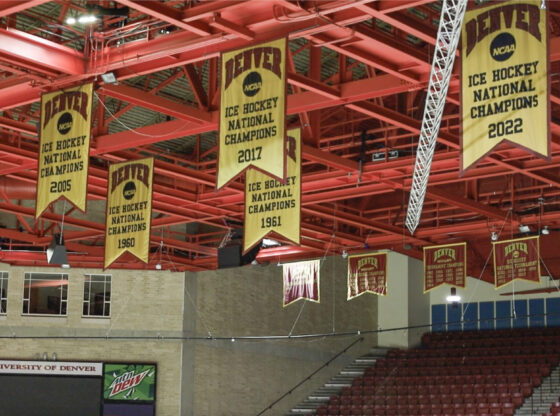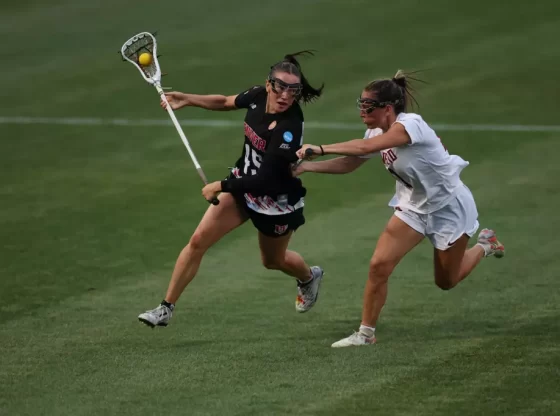 Photo by: Andrew Fielding
Photo by: Andrew Fielding
When Murray Armstrong came to the University of Denver in 1956, there wasn’t much of a hockey program at the school, but by the time he left the school 21 years later, he was a five-time NCAA champion coach for a team that made 11 Frozen Four appearances under his reign.
Armstrong, who was known by many by his nickname “The Chief,” passed away on Dec. 8, 2010 at the age 94, living his final days at his home in St. Augustine, Fla., with his wife, Sis.
Former players and coaching associates have many fond memories of the man who built DU hockey into what it is today, while shaping the landscape of collegiate hockey and impacting it enough to be put in a pretty elite class of former coaches.
“He was the John Wooden, the Knute Rockne of college hockey,” said DU alum and former hockey star Jim Wiste ‘69, who won two NCAA championships with Armstrong in 1968 and 1969. “He changed the sports and gave it credibility, delivered class-act players who he groomed while they were at school.”
Armstrong was effective in coaching for so many reasons, according to Wiste, but his most notable trait may have his sincerity.
When he was recruiting in the 60s for the team, Armstrong would personally drive up to Canada to woo high school players to join him in the Rocky Mountains. There was no national letter of intent like there is today – rather, just a handshake that Murray insisted was as good as any signature.
“The first time I ever met [Armstrong] is when he came through my door of my house and sat down with me and my parents,” said Wiste. “I remembered him saying to my father, ‘If he were my own son, this is what I would recommend,’ and then he offered us his hand to shake and offered me a scholarship, I didn’t know if it was true until I got to school, but he was sincere with what he said – his word was his bond, and that was the way he lived.”
Wiste points to Armstrong’s sincerity as to why he was successful on the ice, as well as off it in his real estate enterprise. He was the only coach in the nation, at that time, who recruited as well as coached, and did so in order to meet the players and their families and encourage them to go to DU.
Under his reign the hockey program was a national force annually, mainly because of how the man inspired his players to do better.
“He was able to raise everyone’s performance through his speeches,” recalled former Pioneer great Cliff Koroll ’68, who went on to have a successful NHL career after winning a national title with Armstrong in 1968 against North Dakota. “After he was done talking, we were ready to go through a wall for him. His messages always stuck. He was the single greatest motivator I’ve ever known.
“He was always giving me positive reinforcement, continually telling me I could go pro, saying things like, ‘if you want it bad enough you can get it.’ That is what I remembered most about him – he embedded a desire in me to make it and inspired me to achieve what I did. He was probably the most influential man in my life other than my father.”
When talking about their former coach, Wiste and Koroll both acknowledge Armstrong’s impeccable speaking ability that was chock full of what players would call “Murray-isms.”
In fact, a former Pioneer stick boy and club manager named Spence Walden made a booklet of the coach’s old sayings, financing the project himself with help from team manager Tom Sampson (1967-1970) and former captain Tom Gilmore.
“He had all these little sayings that held a ton of power when everybody heard them,” said Wiste. “He could reach down and make you give a little more, try a little harder, because when he spoke he had respect and that came from the fact he didn’t say a lot, choosing his words carefully at every speech.”
One phrase stands out to both Wiste and Koroll, Murray’s pregame words of wisdom: “If you give it everything you’ve got, win or lose, you’ll have no regrets. And when you’re shaving tomorrow morning and you look in the mirror, you’ll like the person you see.”
After the pregame motivational talk, there was another handshake between player and coach – a symbol, or a token, of Murray’s sincerity – given out after every speech.
“He would stand by the door and shake our hands and wish us good luck as we went out onto the ice,” said Wiste. “Murray was a big team guy, he thought all of us as were his ‘boys’ and appreciated what all of us did, so he if couldn’t mention all us, then he wouldn’t mention anything.”
The relationship between coach and player vaulted the Pioneers hockey program almost immediately after Murray’s arrival. In his second season, the team won its first national championship. That was 1958, and by the time the next decade concluded, Murray was a five-time national champion coach with his teams finishing as the national runner-up on four separate occasions.
Current head coach George Gwozdecky remembers first meeting Murray as young teenagers in Duluth, Minn., back in the early 60s and said that the coach was “responsible for putting the university on the map.”
“The school got a national profile of being a powerhouse at hockey while he was here, which has allowed people to find out that there was an outstanding private institution in the city of Denver,” said Gwozdecky. “The attention around the program has certainly helped the school, as well as college hockey in general, grow. I am more than honored to carry the torch he lit many decades ago.”
Gwozdecky noted that the legendary coach has a legacy that resides in what he did at Denver and the traditions he helped forged, which are still practiced today. One example of a Murray tradition is when players remain motionless during the national anthem and then for a minute after it concludes.
“He brought hockey to this region of the country and gave hockey players a respectability they had never had before and fans took to use thanks to him,” said Wiste. “He used to say ‘It doesn’t take much to be first-class’ and kept us in line, reminding us we represented the university and forging us into members of the community.”
Today, the Pioneer hockey program shines with the same attitudes, carrying the same success on and off the ice.
“[Murray] was a very moral person,” said Gwozdecky. “He believed in the core values that we still preach today.”
Following in Armstrong’s footsteps, Gwozdecky led the Pioneers to back-to-back national championships in 2004 and 2005.
Wiste acknowledged his former coach’s rigidity as an endearing positive trait, for Armstrong never succumbed to the vices of drinking and smoking while maintaining his health enough to play golf two to three times a week until he was in his nineties. He urged his players to do the same.
Former players stayed in touch with the polarizing figuring, calling him on his birthday every Jan. 1 with Koroll making his final visit with Armstrong two years ago.
That is a memory that will always stick with him, said Koroll, who captained the 1968 title team that scored four goals in the final ten minutes of the national championship to give the Pioneers a 4-0 victory over UND.
“So gratifying that all the hard work paid off,” said Koroll thinking about his finest hours as a player under Armstrong’s tutelage.
While Koroll can pinpoint a certain moment, Wiste would rather not track one down, revealing that it is hard to summarize Armstrong with a specific snapshot in history.
“He was a self-educated man, so he wanted all the players to get a degree and genuinely cared about our education,” said Wiste, reflecting upon what the coach meant to him. “It’s hard to find the words to describe a guy like that – he was perfect in my mind, and I know that I won’t come across a man like that again.”









